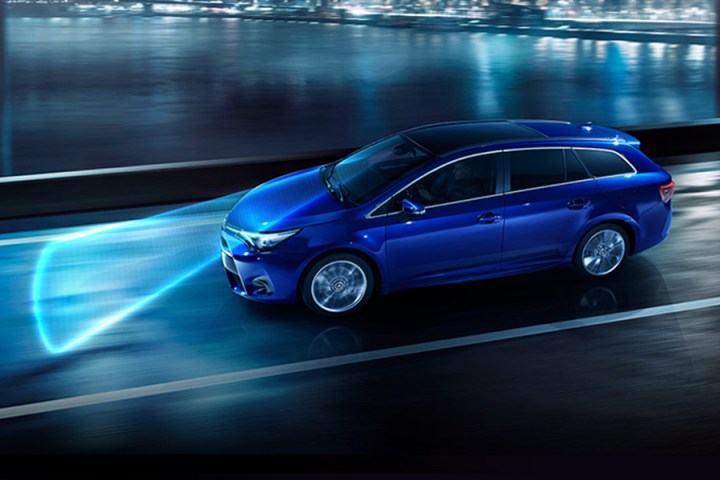
Automatic emergency braking technologies vary between automakers and sometimes by the same brand, but they all have some form of forward-sensing detection. Typical systems use laser beams or millimeter-wave radar, which are paired with visual and audible alerts, plus a mechanism to slow or completely stop the vehicle without driver control if the driver doesn’t take action promptly after alerted. It’s hard to think of a reason not to be a fan of the tech.
Certainly the National Highway Traffic Safety Administration and the Insurance Institute for Highway Safety are for automatic braking. Those two groups and the 20 automakers responsible for 99 percent of U.S. vehicles agreed to make standard some form of automatic braking in all new vehicles by September 1, 2022. But 2022 is six years away — far too long for the automaker, which promises that you’ll be hard pressed to find a Toyota or Lexus without automatic braking by the 2018 model year.
Toyota already has some pretty slick safety technology available including automatic emergency braking, but it’s available only in bundled option packages on most of its vehicles, a practice common with most automakers.
On the other hand, bundling other safety features may not be a bad thing. If you like automatic braking you consider other tech safety features such as blind spot detection, dynamic cruise control, and pedestrian alerts. As vital safety features become standard, the cost comes down. That economic win has a good chance of saving egos, not to mention lives, injury, and vehicle and property damage.
We hold on to our cars longer than we used to, according to figures from IHS. The 2015 study shows new vehicle buyers kept their cars for an average of 78 months versus 53 months in 2006. So if you’re going to upgrade your car and the technology that comes with it less frequently, there’s a good argument to update the whole system to stave off feature lust as long as you can.
Toyota may be the first to announce standard automatic emergency braking in most vehicles, but other automakers will likely follow in the race to capture market share. If you don’t need a new vehicle right now, chances are pretty good that in two years or less any new car or light truck will have automatic emergency braking and other automated safety features to boot.
Editors' Recommendations
- Toyota has a new electric car for you — and it’s about the size of a golf cart
- New Toyota tech will automatically shut off engines, apply parking brakes



